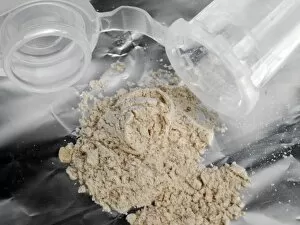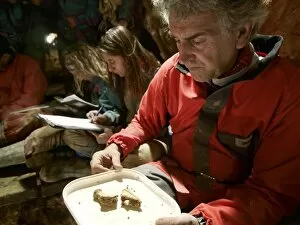Paleogenetics Collection
Paleogenetics, the study of ancient DNA, has revolutionized our understanding of human evolution
All Professionally Made to Order for Quick Shipping
Paleogenetics, the study of ancient DNA, has revolutionized our understanding of human evolution. Through the extraction of fossil DNA from various archaeological sites, scientists have been able to unlock secrets that were once hidden in time. The process begins with meticulous excavations at sites like Sima de los Huesos in Spain. These digs have unearthed remarkable finds such as Homo heidelbergensis thigh bone, providing valuable insights into our ancestors' lives. Once these fossils are carefully collected and preserved, the real magic happens – the extraction of fossil DNA. Using advanced techniques and technologies, scientists painstakingly extract genetic material from these ancient remains. The extracted samples bear unique codes like C018 / 5398 or C018 / 5400, representing a treasure trove of information waiting to be decoded. Each sample holds clues about our past and helps piece together humanity's intricate puzzle. These fragments hold within them stories that span thousands or even millions of years. They provide glimpses into long-extinct species and shed light on their relationships with modern humans. Through paleogenetics, researchers have made groundbreaking discoveries about human migration patterns, interbreeding events between different hominin species, and even identified new branches on our evolutionary tree. As more extractions take place – C018 / 5399 or C018 / 5402 – each one adds another layer to our understanding of who we are as a species. The data obtained from these extractions is invaluable for reconstructing ancestral genomes and mapping out the complex web of human history. Excavations at Sima de los Huesos continue to yield fascinating results – C018 / 5726 or C018 / 5727 – further enriching our knowledge about early humans who roamed this region thousands of years ago. With every successful extraction -C018/6377- comes hope for new breakthroughs in paleogenetics research. Scientists eagerly analyze these precious samples.
















